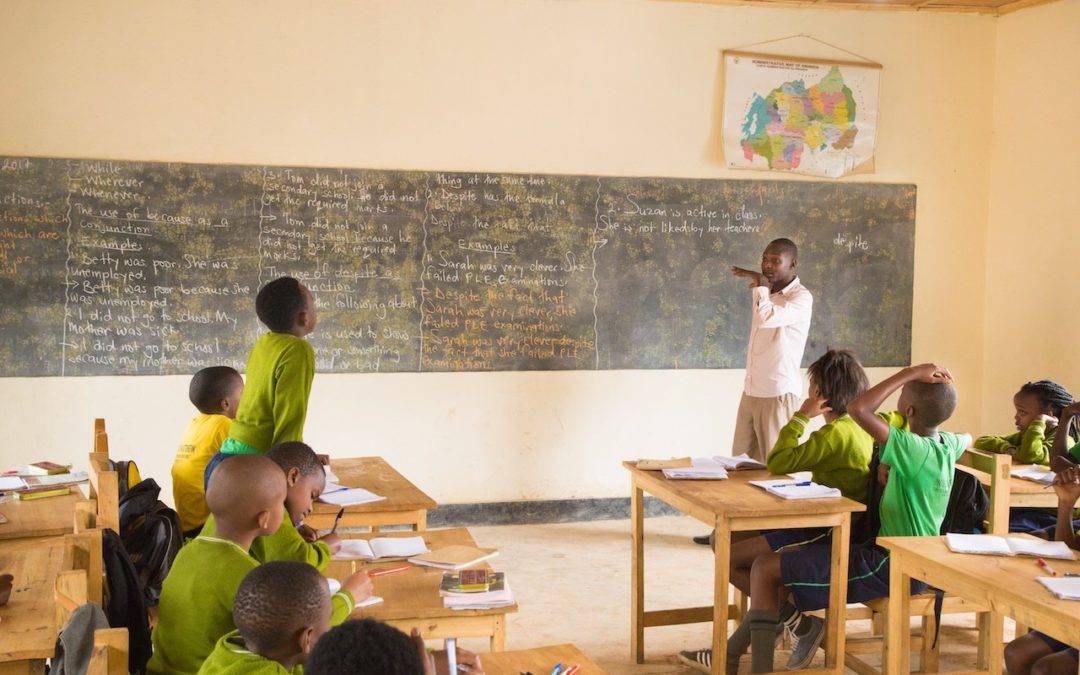Quality Education Means Needing 68.8 Million More Quality Teachers
One of the greatest pieces to the global education crisis often goes overlooked: teachers.
Good teachers remain an essential and crucial key to quality education, healthy schools, and students truly learning –no matter where you live.
But there’s a problem.
Globally, we’re going to need 68.8 million more of them, and a vast majority of the world’s current teachers are severely under-trained.
Global Teaching Shortage Leading to Under-trained Teachers
If education is going to be accessible to all children, the UN estimates that the world will need at least 68.8 million more teachers in the next 10 years. That means we’ll need to recruit 24.4 million primary teachers and 44.4 million secondary teachers –Sub-Saharan Africa alone needs 17 million.
Because of this shortage of teachers, pupil-teacher ratios are ballooning. Overcrowded classrooms and schools make it hard both to teach and to learn. Rwanda and Sierra Leone have one of the world’s highest student to teacher ratios in the world, 60:1 and 61:1, compared to the U.S., 14:1. Schools are left to try mitigate the shortage by hiring teachers who may be under-trained and under-qualified, and this is having a detrimental impact on student learning.
In 2017, “What Do Teachers Know and Do? Does it Matter?” was published by The World Bank. It was a survey of seven Sub-Saharan African countries studying teacher “effort, knowledge, and skills,” how many hours of teaching is performed in a day, teachers’ understanding of subjects taught, good teaching practices, and an understanding of the theory and practice of learning.
The results were profound.
- “Averaging across countries, we find that students receive about 2h 50m of teaching per day, less than half of what is considered a full day … This is largely because teachers, even when in school, are not teaching.”
- “Teachers’ subject knowledge is strikingly low.”
- “1 in 10 fourth grade teachers master their students’ curriculum and 1 in 4 teachers fail simple tasks (such as subtracting 2-digit numbers for math teachers or choosing the correct pronoun or conjunction to complete a sentence for language teachers).”
A separate survey of 20,000 public school teachers in Guatemala found that “just over 50% of reading questions were answered correctly.”
The Ministry of Education in Ghana reports that almost 45% (~63,000) of primary school teachers and about 30% (~31,000) of secondary school teachers are untrained, resulting in Ghana having the lowest ranking in math and science student proficiency in the world.
Specifically in low-income countries, 28% of primary school teachers are untrained altogether. That percentage is only increasing for secondary school teachers.
What Does it Mean to Be a Teacher? Well, It Depends.
Quality teachers and teaching are the greatest predictors of student learning, more than any other school-based factor.
But depending on which country, state, or region, the qualifications to teach vary greatly which significantly impacts student learning.
Around the world, teaching qualifications are all across the map.
In high-income countries like the United States, teachers are required to have a bachelor’s degree, supervised hands-on classroom experience, a teaching certificate or license, and complete some type of basic skills test.
In low-income countries, schools are desperate to fill the growing teacher shortage and fill classrooms with instructors who don’t need to meet the same training and experience as others. Some might require only a high school diploma. There could be academic qualifications or just training requirements. Classroom experience could be optional, professional development, licensing, continuing education… all of it varies, and sometimes these variations can exist within the same country.
Countries that rank low in teacher training also rank low in math and reading proficiency, school completion, and have high numbers of out-of-school students further underscoring the relationship between teachers and students.
Let’s Get to Training
Professional development, continuing education and training, and access to support for teachers is paramount to increase teachers’ skills and quality of teaching; even raising teacher retention and strengthening the education system itself. A quality education necessitates quality teaching, but for some countries that’s a tall order when you need a million or more teachers.
It has always been important to increase access to education and improve the quality of curriculum to help students learn and succeed. An equal emphasis on teacher-centric training and education will be vital in the coming years as the world continues to push forward in making sure students are not just being educated, but learning.
What will remain the most crucial component of a quality education, a healthy education system, and flourishing schools will be first and foremost investing in those who are in the classroom every day with students –the teachers.
___________
Edify recognizes the necessity of quality teachers and has integrated both proprietor and teacher training as part of our resources offered to our partner schools. Want to learn more about our work, including training our partner school teachers? Click here.

